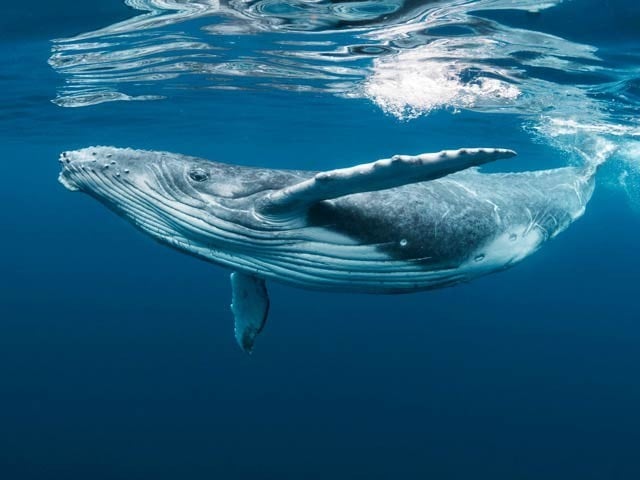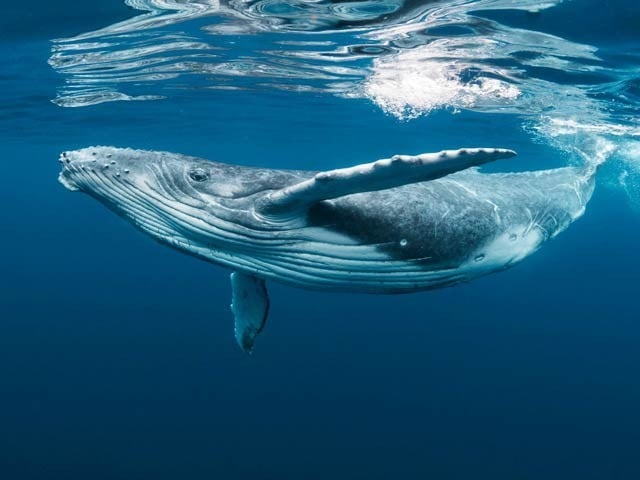
According to Australian experts, whales emit more vocalizations in isolation, which decreased as the population increased. Photo: File
Brisbane: Experts have said that humpback whales, in particular, emit song-like sounds when alone. Now it has happened that as their population is increasing, their voices are also decreasing.
Australian marine biologist Rebecca Dunlop has been studying humpback whales in the Great Barrier Reef for the past 20 years. They say that humpback whales have experienced a dramatic increase in their population since commercial hunting has stopped, but with this increase, their vocalizations or solitary calls have also stopped.
Further research at the University of Queensland revealed that humpback whales were more vocal when their numbers were reduced. These sounds were recorded by underwater sensitive microphones.
There was also a time in 1960 when the number of humpback whales was reduced to only 200. This was the period when most whale sounds were recorded. Experts believe that this is how whales used to call their mate or the opposite sex for sexual intercourse. Now the number of humpback whales has reached 27,000 due to the restoration of the whales and their sounds have decreased accordingly.
This is the first study to show a link between whale sounds and their loneliness.
(function(d, s, id){
var js, fjs = d.getElementsByTagName(s)[0];
if (d.getElementById(id)) {return;}
js = d.createElement(s); js.id = id;
js.src = “//connect.facebook.net/en_US/sdk.js#xfbml=1&version=v2.3&appId=770767426360150”;
fjs.parentNode.insertBefore(js, fjs);
}(document, ‘script’, ‘facebook-jssdk’));
(function(d, s, id) {
var js, fjs = d.getElementsByTagName(s)[0];
if (d.getElementById(id)) return;
js = d.createElement(s); js.id = id;
js.src = “//connect.facebook.net/en_GB/sdk.js#xfbml=1&version=v2.7”;
fjs.parentNode.insertBefore(js, fjs);
}(document, ‘script’, ‘facebook-jssdk’));



